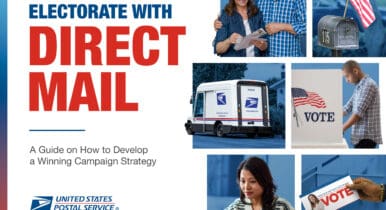How To Craft The Perfect Fundraising Message Post-RNC


Republican candidates and campaigns are coming off the RNC in Milwaukee feeling united. In this environment, fundraising is going to have a renewed focus. With so much energy on the Republican side, fundraising practitioners could be forgiven for forgetting that every donor is unique, every candidate is unique, every race is unique—and every housefile is unique. That means even though donors might be primed to give, they won’t be moved to contribute without a fundraising message that appeals to them directly. Here are five steps for creating a specific, guiding prompt when one isn’t provided.
Step 1: Research your new client.
This one is the most obvious – you need to research your client. If you’ve just been tasked to write an email for a new client, Sen. Jane Doe, you should Google News search them, check their website, check their social media pages, watch interview clips, or listen to soundbites. This stage will give you a feel for your client’s tone, which will later be used to build their brand as a whole.
If they were a police officer or were in the military, or maybe have spent years as a stay at home mom – major life choices and career paths that they have made or taken will serve as the foundation for their brand. Oftentimes during this stage, relevant news articles and headlines will come to light. It’s tempting to take one of those and run with it, but I would caution against beginning your writing before fulfilling Steps Two through Four.
Step. 2: Open the oppo file.
Understanding your client’s opponent is essential, and researching them at the same level that you research your own client can be hugely helpful. If they’re an incumbent, reading up on their relationship with their constituents or district can reveal weak spots. Similarly, if you’re writing for a group or organization, you may want to look into their financial contributions, news articles, and history of comments or stances in contrast to the region in which they are relevant. No one who holds or is running for office is perfect – it’s your job to find out what will most disturb and motivate your audience to take action against your client’s opponent, which brings us to Step Three.
Step. 3: Know your audience.
While this is the crux of your mission as a writer, it’s challenging. We can’t speak with each potential donor on the phone to find out what it is that makes them tick. But doing our job means leaving no stone unturned when it comes to learning our audience.
Questions to be asked:
- What state am I targeting?
- Is the majority of this list old or young?
- What has made this group of people donate their money in the past?
- Is my audience familiar with my client?
- Who does my audience trust?
- What kind of subject lines have brought in the most clicks in the past?
- What does my audience dislike most about my client’s opponent?
- What would increase my audience’s quality of life?
Some of these questions won’t be answerable to you the first time you write for someone, but your goal should be to learn the answers to each. While fundraising emails framed as surveys can be useful for raising money, they can also be useful to genuinely learn about who you are writing to, and the results and clicks should always be reviewed and considered.
Step. 4: Use your own judgment.
At this point in the writing process, you’ll likely have several competing ideas swirling around in your head. Here’s where you have to use your own judgment, put yourself in your audience’s shoes, and decide what you would want and need to hear if you were them. It’s my belief that if you don’t, on a personal level, buy into your client, your work for them will suffer – and this step in the writing process is why. If you would never consider supporting your client for public office, then you don’t have enough in common with your audience to effectively write to them.
Step. 5: Get to drafting.
Now that you’ve formulated a clear prompt for yourself – you can write. I recommend writing your letter in one sitting. You can and should revisit it and edit it, but writing it in one sitting guarantees a greater sense of cohesion.
At my shop, ensuring we follow each of these steps has given us success in races up and down the ballot and with candidates of all backgrounds writing to lists of varying sizes and makeup.
Quinn Huckeba, Head Copywriter at Politicoin and RNC alum, is a Marine Corps spouse currently stationed in Hawaii with her husband and two daughters.


